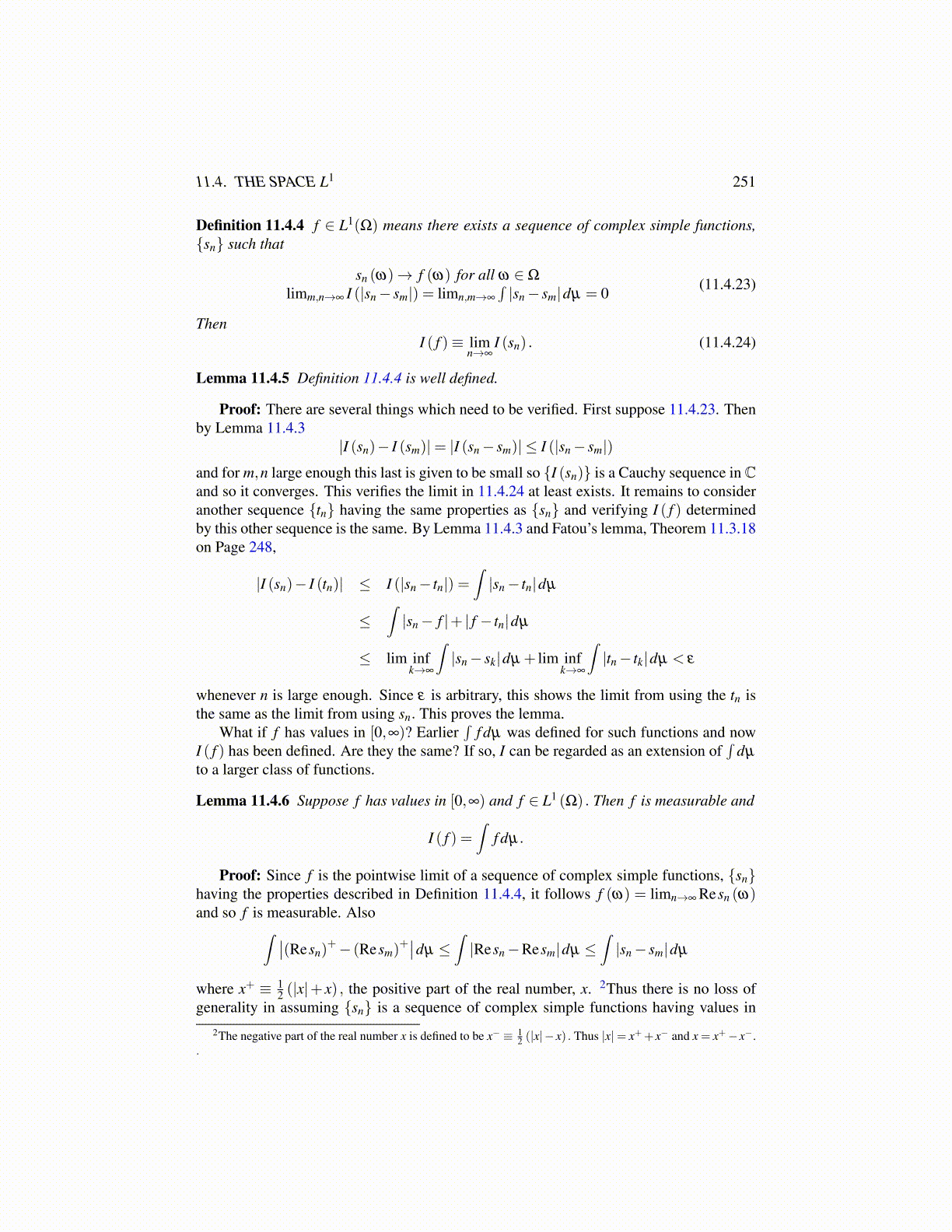
11.4. THE SPACE L1 251
Definition 11.4.4 f ∈ L1(Ω) means there exists a sequence of complex simple functions,{sn} such that
sn (ω)→ f (ω) for all ω ∈Ω
limm,n→∞ I (|sn− sm|) = limn,m→∞
∫|sn− sm|dµ = 0 (11.4.23)
ThenI ( f )≡ lim
n→∞I (sn) . (11.4.24)
Lemma 11.4.5 Definition 11.4.4 is well defined.
Proof: There are several things which need to be verified. First suppose 11.4.23. Thenby Lemma 11.4.3
|I (sn)− I (sm)|= |I (sn− sm)| ≤ I (|sn− sm|)and for m,n large enough this last is given to be small so {I (sn)} is a Cauchy sequence in Cand so it converges. This verifies the limit in 11.4.24 at least exists. It remains to consideranother sequence {tn} having the same properties as {sn} and verifying I ( f ) determinedby this other sequence is the same. By Lemma 11.4.3 and Fatou’s lemma, Theorem 11.3.18on Page 248,
|I (sn)− I (tn)| ≤ I (|sn− tn|) =∫|sn− tn|dµ
≤∫|sn− f |+ | f − tn|dµ
≤ lim infk→∞
∫|sn− sk|dµ + lim inf
k→∞
∫|tn− tk|dµ < ε
whenever n is large enough. Since ε is arbitrary, this shows the limit from using the tn isthe same as the limit from using sn. This proves the lemma.
What if f has values in [0,∞)? Earlier∫
f dµ was defined for such functions and nowI ( f ) has been defined. Are they the same? If so, I can be regarded as an extension of
∫dµ
to a larger class of functions.
Lemma 11.4.6 Suppose f has values in [0,∞) and f ∈ L1 (Ω) . Then f is measurable and
I ( f ) =∫
f dµ.
Proof: Since f is the pointwise limit of a sequence of complex simple functions, {sn}having the properties described in Definition 11.4.4, it follows f (ω) = limn→∞ Resn (ω)and so f is measurable. Also∫ ∣∣(Resn)
+− (Resm)+∣∣dµ ≤
∫|Resn−Resm|dµ ≤
∫|sn− sm|dµ
where x+ ≡ 12 (|x|+ x) , the positive part of the real number, x. 2Thus there is no loss of
generality in assuming {sn} is a sequence of complex simple functions having values in2The negative part of the real number x is defined to be x− ≡ 1
2 (|x|− x) . Thus |x|= x++x− and x = x+−x−..